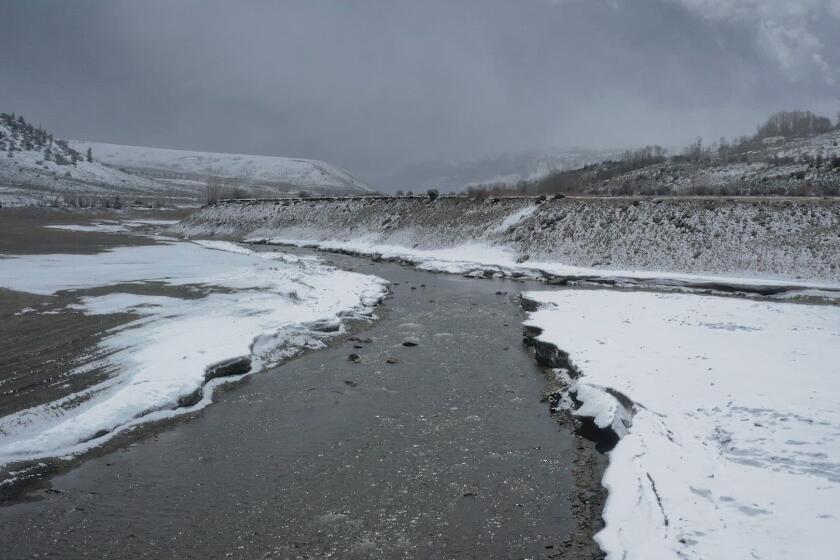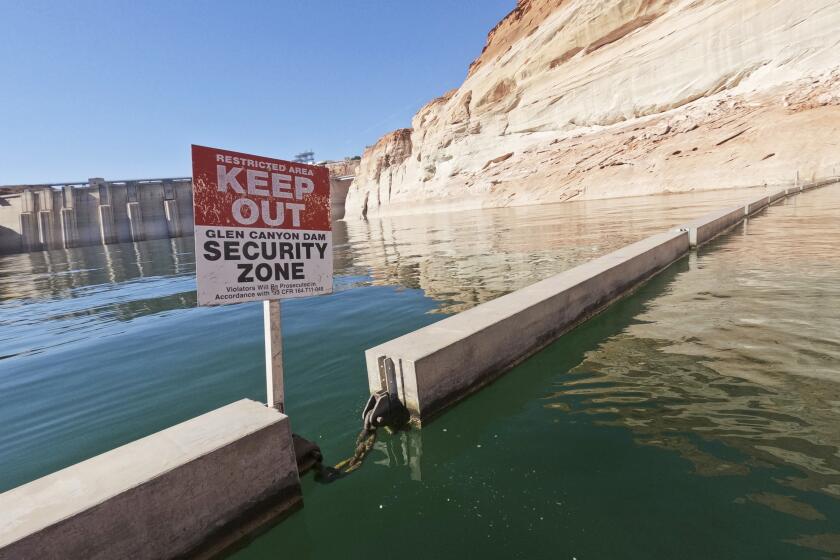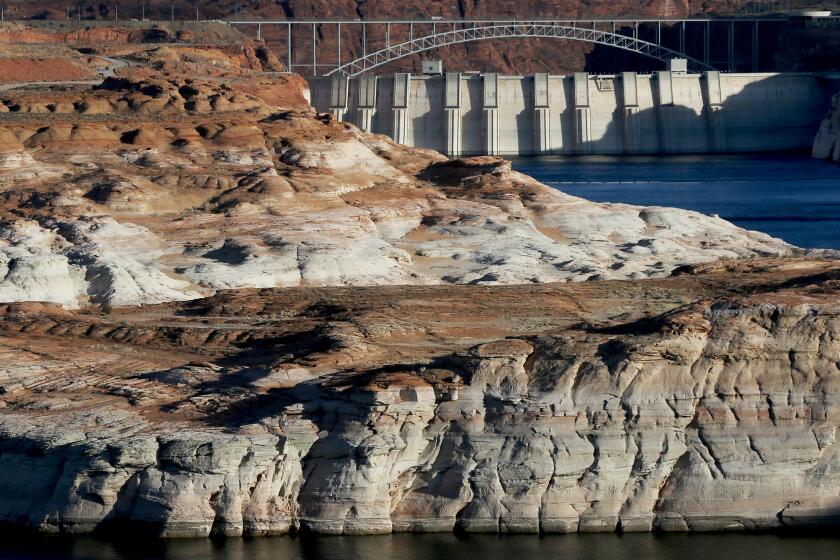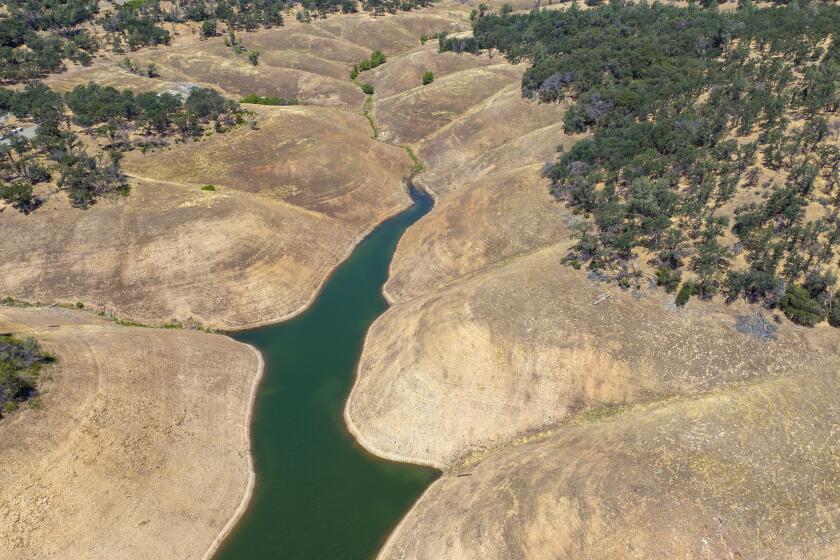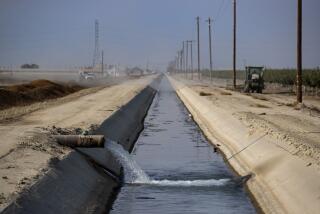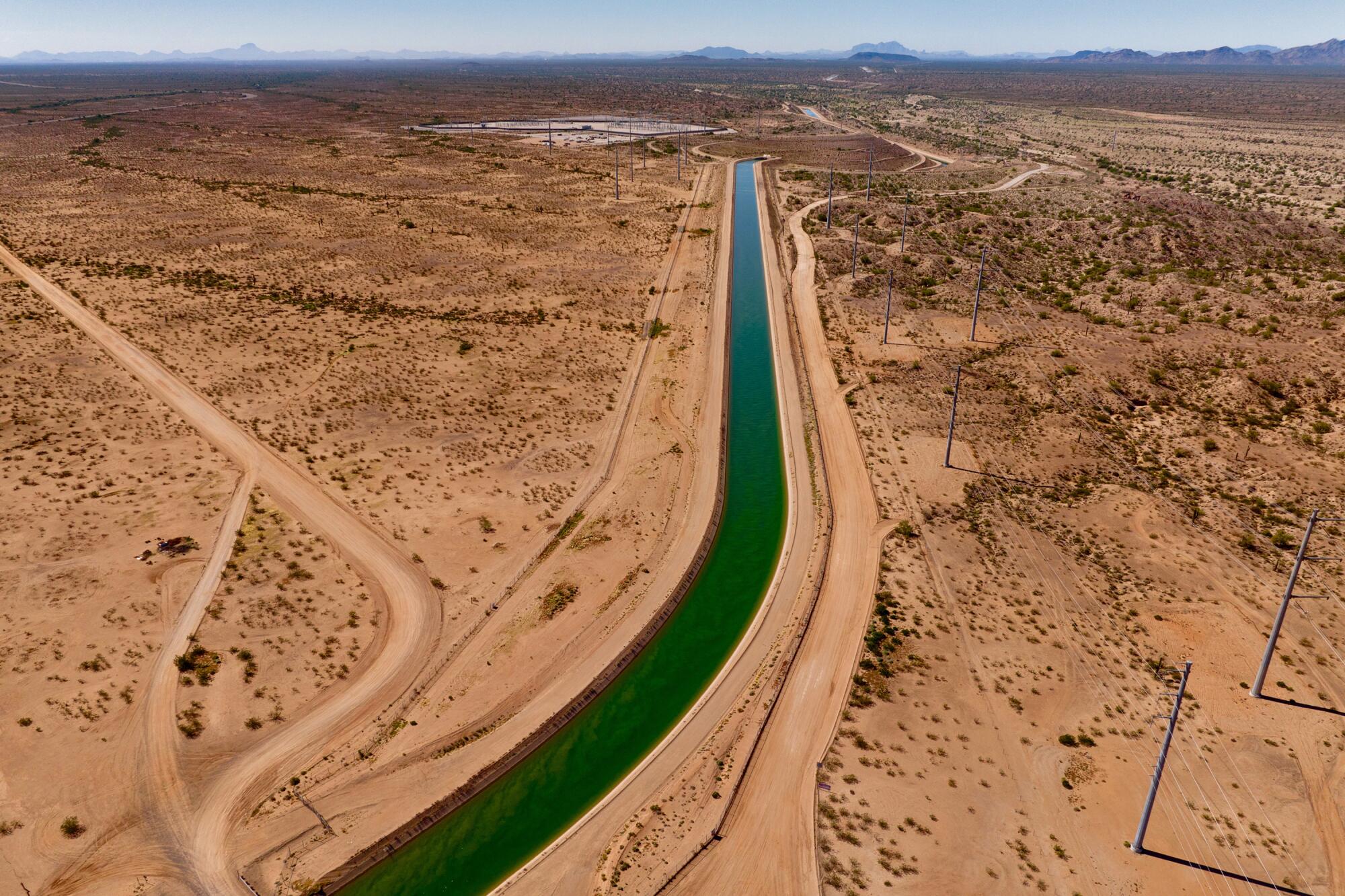
- Share via
BUCKEYE, Ariz. — Kathleen Ferris stared across a desert valley dotted with creosote bushes, wondering where the water will come from to supply tens of thousands of new homes. In the distance, a construction truck rumbled along a dirt road, spewing dust.
This tract of open desert west of Phoenix is slated to be transformed into a sprawling development with up to 100,000 homes — a 37,000-acre property that the developers say will become Arizona’s largest master-planned community.
“It’s mind-boggling,” Ferris said. “I don’t think there is enough water here for all the growth that is planned.”
Water supplies are shrinking throughout the Southwest, from the Rocky Mountains to California, with the flow of the Colorado River declining and groundwater levels dropping in many areas. The mounting strains on the region’s water supplies are bringing new questions about the unrestrained growth of sprawling suburbs.

Ferris, a researcher at Arizona State University’s Kyl Center for Water Policy, is convinced that growth is surpassing the water limits in parts of Arizona, and she worries that the development boom is on a collision course with the aridification of the Southwest and the finite supply of groundwater that can be pumped from desert aquifers.
For decades, Arizona’s cities and suburbs have been among the fastest growing in the country. In most areas, water scarcity has yet to substantially slow the march of development.
But as drought, climate change and the chronic overuse of water drain the Colorado River’s reservoirs, federal authorities are demanding the largest reduction ever in water diversions in an effort to avoid “dead pool” — the point at which reservoir levels fall so low that water stops flowing downriver.
Already, Arizona is being forced to take 21% less water from the Colorado River, and larger cuts will be needed as the crisis deepens.
Colorado River in Crisis is a series of stories, videos and podcasts in which Los Angeles Times journalists travel throughout the river’s watershed, from the headwaters in the Rocky Mountains to the river’s dry delta in Mexico.
To deal with those reductions and access other supplies to serve growth, the state is turning more heavily to its underground aquifers. As new subdivisions continue to spring up, workers are busy drilling new wells.
Ferris and others warn, however, that allowing development reliant solely on groundwater is unsustainable, and that the solution should be to curb growth in areas without sufficient water.
“What we’re going to see is more and more pressure on groundwater,” Ferris said. “And what will happen to our groundwater then?”
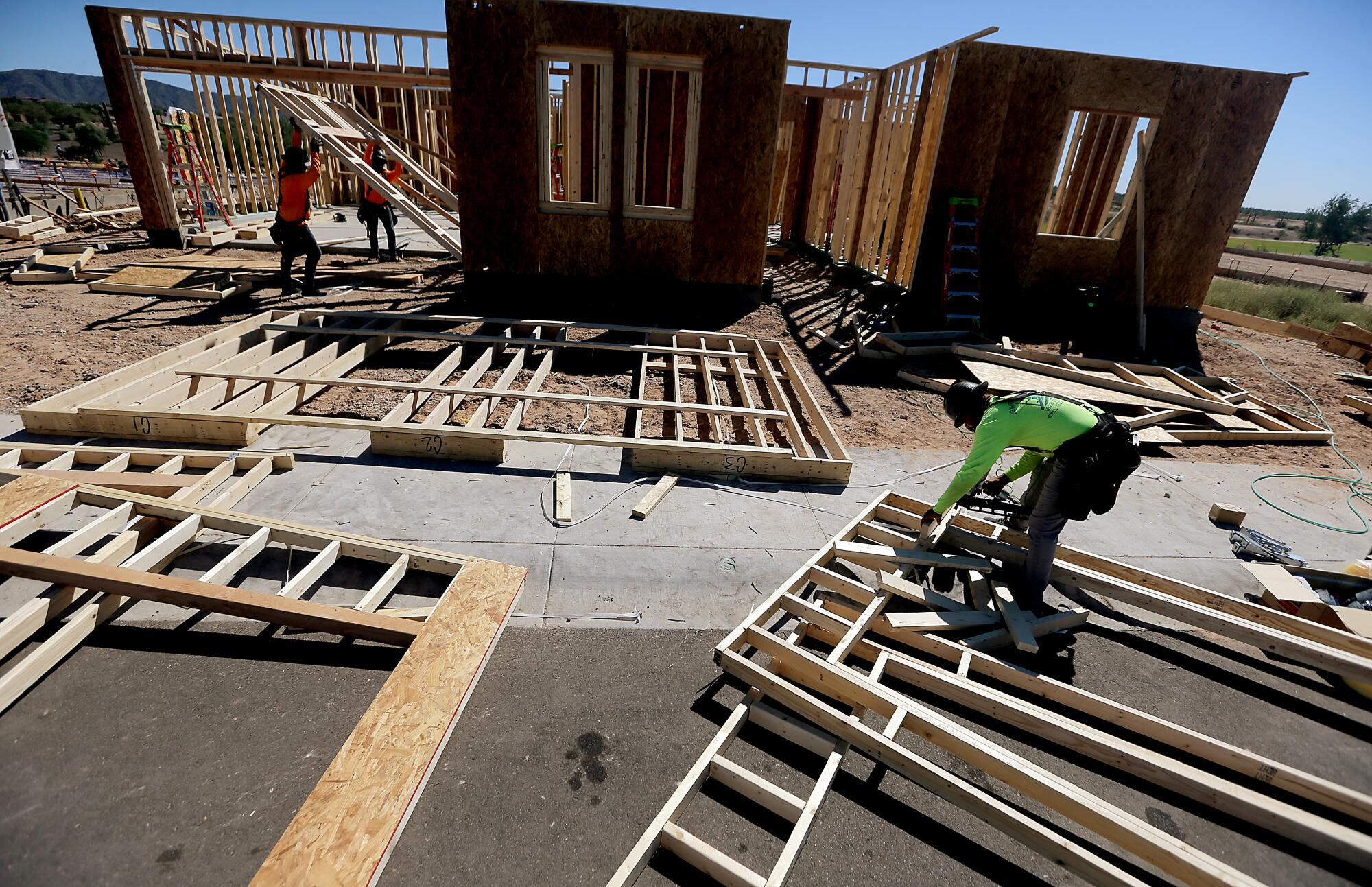
One of the fastest-growing cities in the Phoenix area is Buckeye, which has plans to nearly triple its population by 2030. According to its 2020 water resources plan, 27 master-planned communities are proposed in Buckeye, which depends primarily on groundwater. If all the proposed developments are fully built, the city’s population, now 110,000, would skyrocket to about 872,000.
In the area Ferris visited, construction has begun on the giant development called Teravalis, where the developers plan to build the equivalent of a new city, complete with more than 1,200 acres of commercial development.
State water regulators have granted approvals to allow an initial portion of the project to move forward. But in other nearby areas of Buckeye, state officials have sent letters to builders putting some approvals on hold while they study whether there is enough groundwater for all the long-term demands.
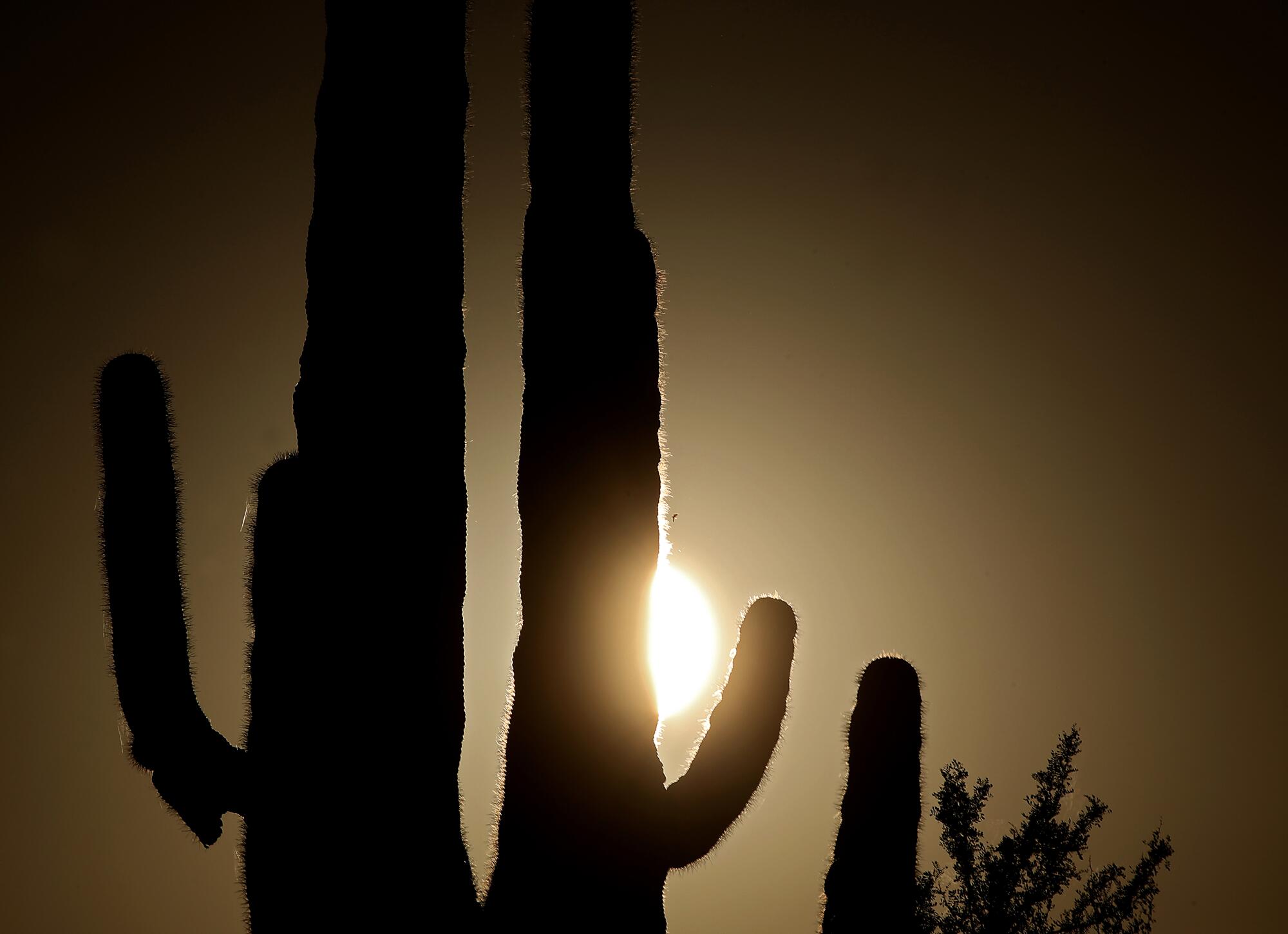
“It’s hard for me to imagine wall-to-wall homes out here,” Ferris said, standing on the gravel shoulder of the Sun Valley Parkway, which runs across miles of undeveloped land. “This is the epitome of irresponsible growth. It is growing on desert lands, raw desert lands, where there’s no other water supply except groundwater.”
Nearby, the Central Arizona Project snakes through the desert, filled with Colorado River water. The CAP Canal was built between 1973 and 1993, bringing water that has enabled growth. But its supply came with low-priority water rights that made it vulnerable to cuts in a shortage.
The Phoenix metropolitan area’s population has more than doubled since 1990, expanding from 2.2 million to about 4.9 million people. Subdivisions have been built on former farmlands as development has expanded across the Salt River Valley, also called the Valley of the Sun.
Water agencies that supply cities along the Colorado River are pledging to boost conservation and target ‘nonfunctional’ grass to address the water shortage.
Ferris, a lawyer and former director of the Arizona Department of Water Resources, helped draft the state’s 1980 Groundwater Management Act, which was intended to address overpumping and has since regulated groundwater use in urban areas.
Water from the CAP Canal has enabled cities to pump less from wells. For years, they have banked some of the imported Colorado River water underground by routing it to basins where it percolates down to aquifers.
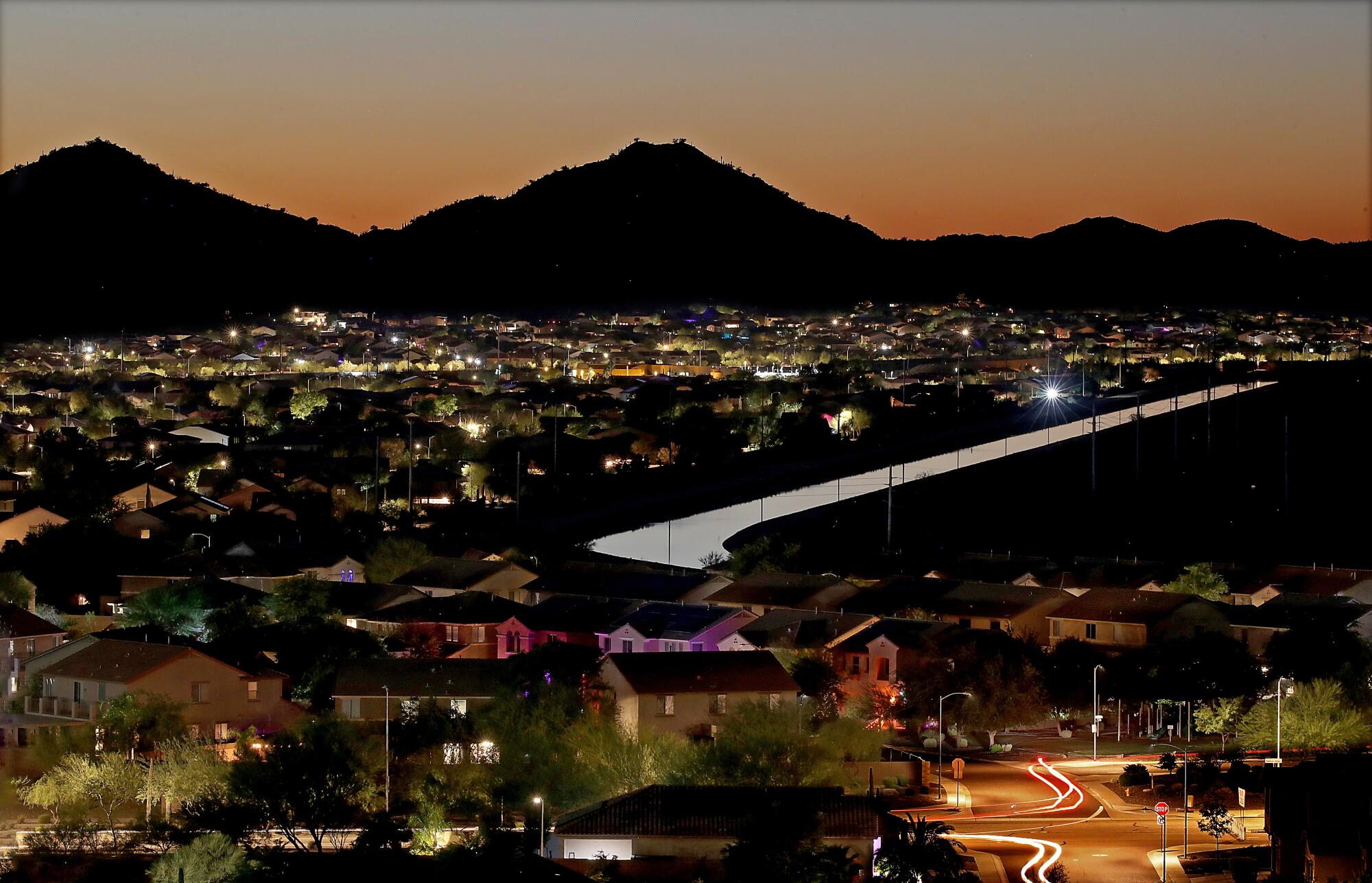
The state requires that new developments around Phoenix and other urban areas have a 100-year “assured water supply,” based on a calculation that allows for groundwater to be pumped down to a level 1,000 feet underground. Changes by the Legislature and regulators in the 1990s cleared the way for subdivisions to rely on groundwater as an assured water supply.
Since then, a groundwater replenishment district has been charged with securing water and using it to recharge aquifers, creating an accounting system. The problem with this system, Ferris said, is that groundwater has been overallocated, allowing for excessive pumping in some areas.
Ferris said she thinks the current rules are no longer adequate, especially with much less imported water available to recharge groundwater.
“We’ve got to learn to live within our means. Groundwater was always supposed to be a savings account, to be used only in times of shortages. Well, now those shortages look permanent,” Ferris said. “We ought to be saying, ‘How much growth can we really sustain?’ And put limits on how much water we’re going to use.”
Colorado River reservoirs are dropping amid drought and climate change. The Biden administration has announced new measures to address the crisis.
The desert aquifers contain “fossil” water that has been underground for thousands of years.
“That water is not replenished. And so once it’s pumped, it’s pretty much gone,” Ferris said.
In recent years, Arizona has received about 36% of its water from the Colorado River. The river has long been severely overallocated, and its flows have shrunk dramatically during 23 years of megadrought intensified by global warming.
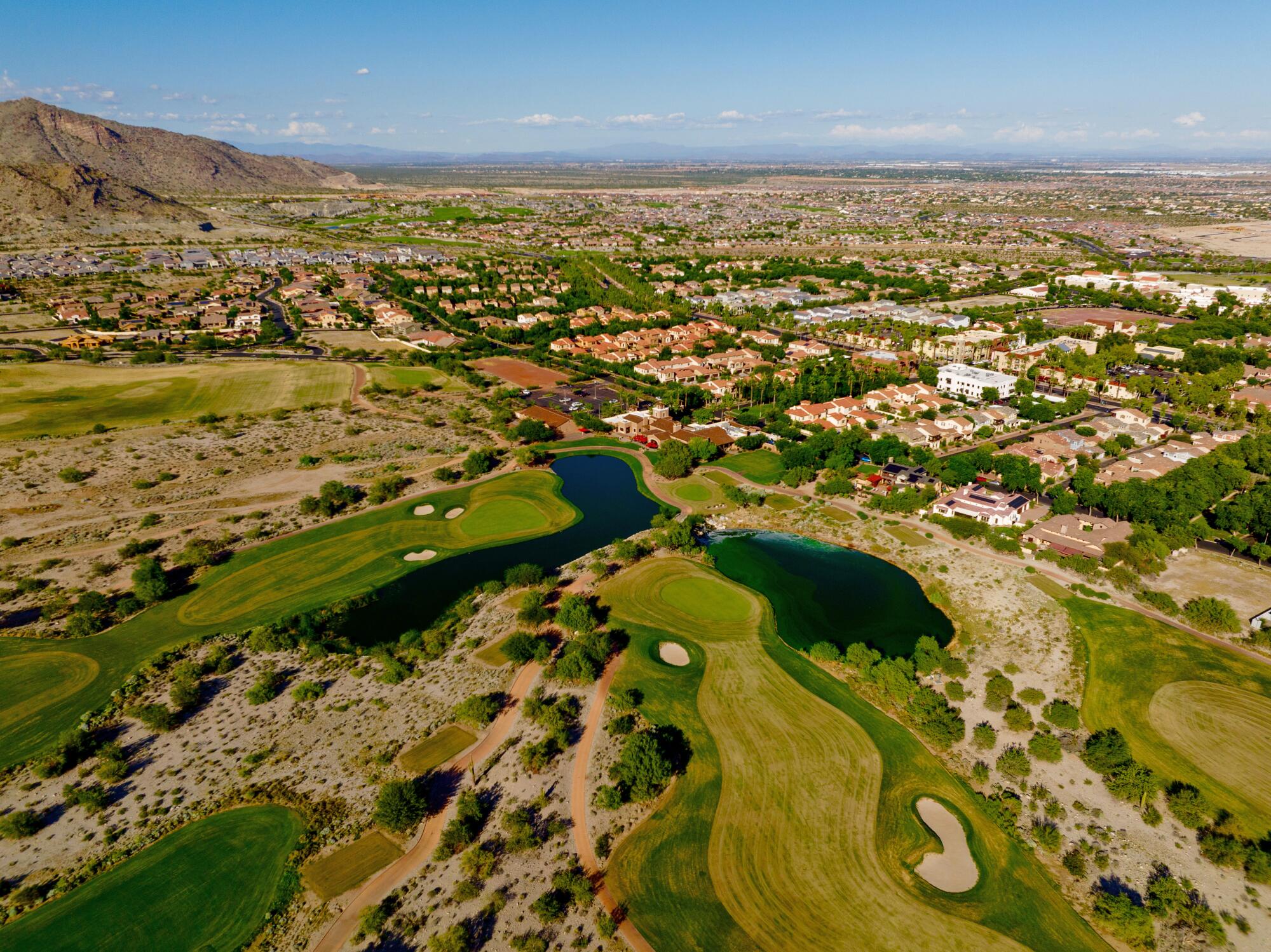
The river’s largest reservoirs, Lake Mead and Lake Powell, now sit nearly three-fourths empty. Federal officials have warned there is a real danger the reservoirs could drop so low by 2025 that water would no longer flow past Hoover Dam to Arizona, California and Mexico.
Ferris said Arizona now needs to plan for years with little or no Colorado River water. She said she feels sad and angry that federal and state water managers, despite warnings by scientists, failed to act sooner to address the shortage.
“The Colorado River is dying,” Ferris said. “It is dying from overallocation, overuse, aridification, mismanagement.”
In the same way that tough decisions about the Colorado River were neglected for years, she said, “we’re not managing our groundwater well.”
Colorado River reservoirs have fallen to alarming levels, prompting growing calls for urgent action to cut water use in seven states.
“Either we do something about this now or we pay the consequences later. And we’re paying the consequences now with the Colorado River, because we didn’t deal with those problems soon enough,” Ferris said. “If we fail to plan for the idea that our groundwater will no longer be sufficient, then shame on us.”
Alongside the river’s decline, the Southwest is undergoing a parallel crisis of groundwater depletion. Scientists found in a 2014 study, using measurements from NASA satellites, that pumping depleted more than 40 million acre-feet of groundwater in the Colorado River Basin over nine years, about 1½ times the maximum capacity of Lake Mead.
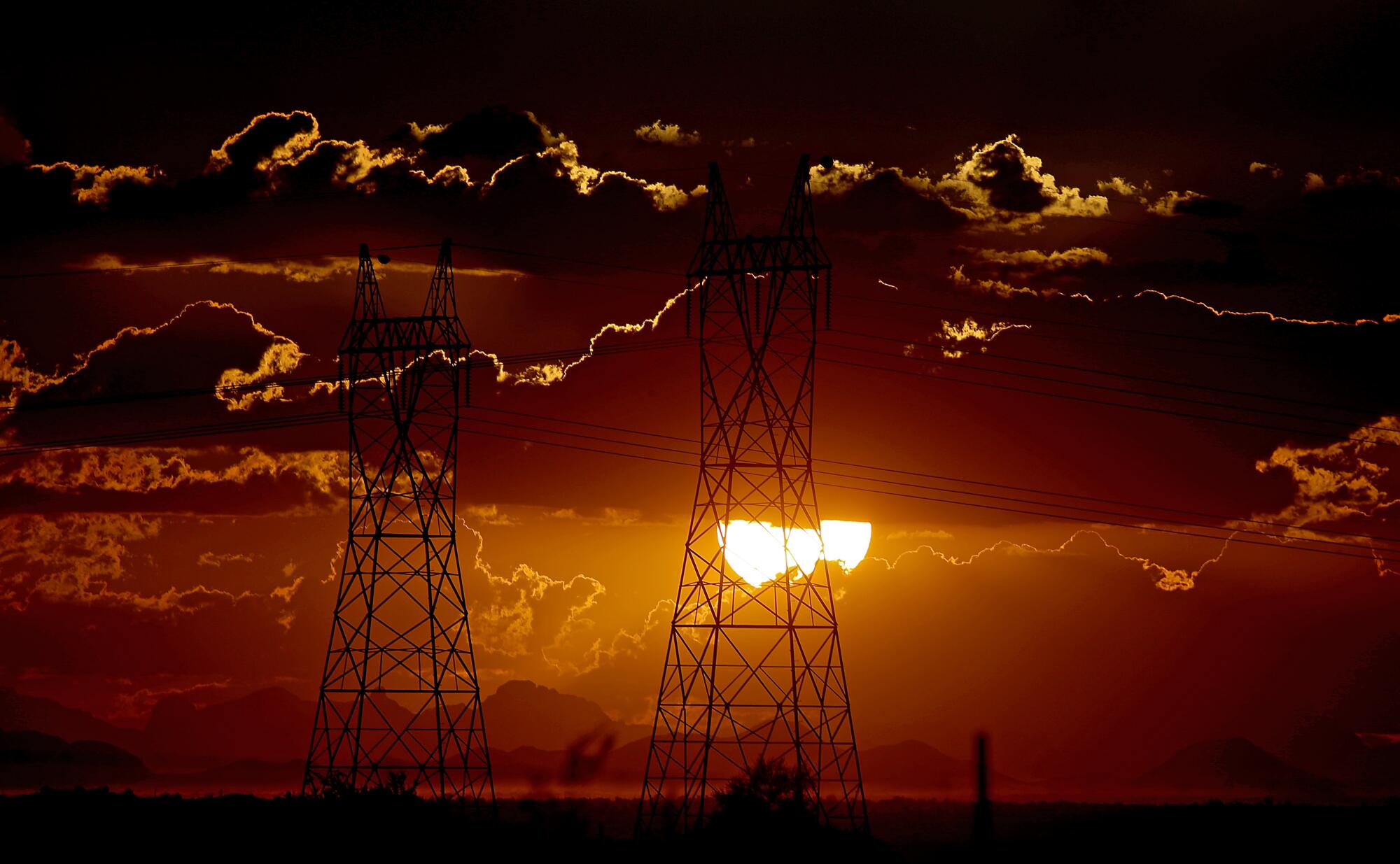
“Our research has shown that the groundwater in the lower basin has been disappearing nearly seven times faster than the combined water losses from Lakes Powell and Mead,” said Jay Famiglietti, a hydrology professor and executive director of the University of Saskatchewan’s Global Institute for Water Security. “Groundwater losses of that magnitude are literally an existential threat to desert cities like Phoenix and Tucson.”
Arizona’s allocation of Colorado River water delivered through the CAP Canal will be cut by more than a third in 2023. Some Arizona farmers are losing their CAP supplies, while irrigation districts are drilling new state-funded wells.
Arizona’s cities have yet to see major reductions. But that could soon change.
Ferris said she thinks growth should happen in areas where sufficient water is available, and from multiple sources.
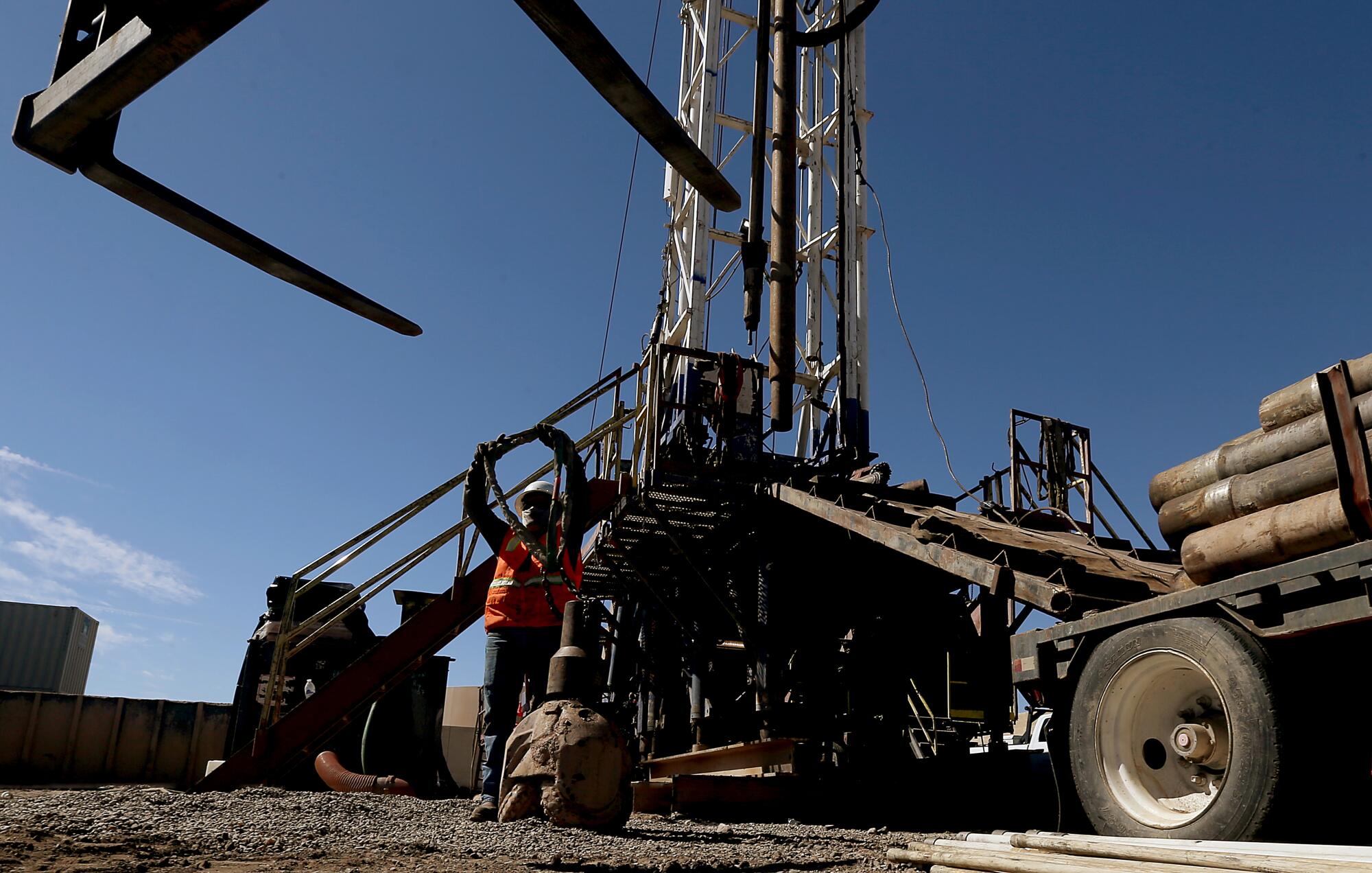
The city of Peoria, northwest of Phoenix, is one example of an area with a variety of sources, including the Colorado River, the Salt and Verde rivers and recycled wastewater. Since 1996, the city has been banking water underground, storing treated wastewater effluent and a portion of its Colorado River water.
The city is now drilling wells to pump out some of those supplies.
“Even if the Colorado River went away completely, we expect to have enough water banked underground to last us for years,” said Cape Powers, Peoria’s water services director. “We’ll continue to prepare for whatever comes our way.”
Citing global warming, California Gov. Gavin Newsom has unveiled a new water strategy to conserve, capture, recycle and desalinate supplies.
Nearby, a drilling crew was preparing to bore one of eight new wells for the city.
“Every drill rig that my company has is spoken for until May or June of next year,” said Ralph Anderson, the owner of Arizona Beeman Drilling. “The business in the next three to five years is going to just go through the roof.”
Some cities are maneuvering in other ways, reaching outside the Phoenix area to secure water.
The growing Phoenix suburb of Queen Creek recently won approval for a controversial $22-million deal to buy water rights from an investment company that will leave farmland dry in the community of Cibola, next to the Colorado River.
Queen Creek has also signed a 100-year contract to pay landowners $30 million to leave farmland fallow in the rural Harquahala Valley west of Phoenix, allowing them to pump groundwater and ship it to the suburbs.
Other cities are also looking to pump groundwater in the Harquahala Valley and other areas where they would be allowed to transport the water by canal.
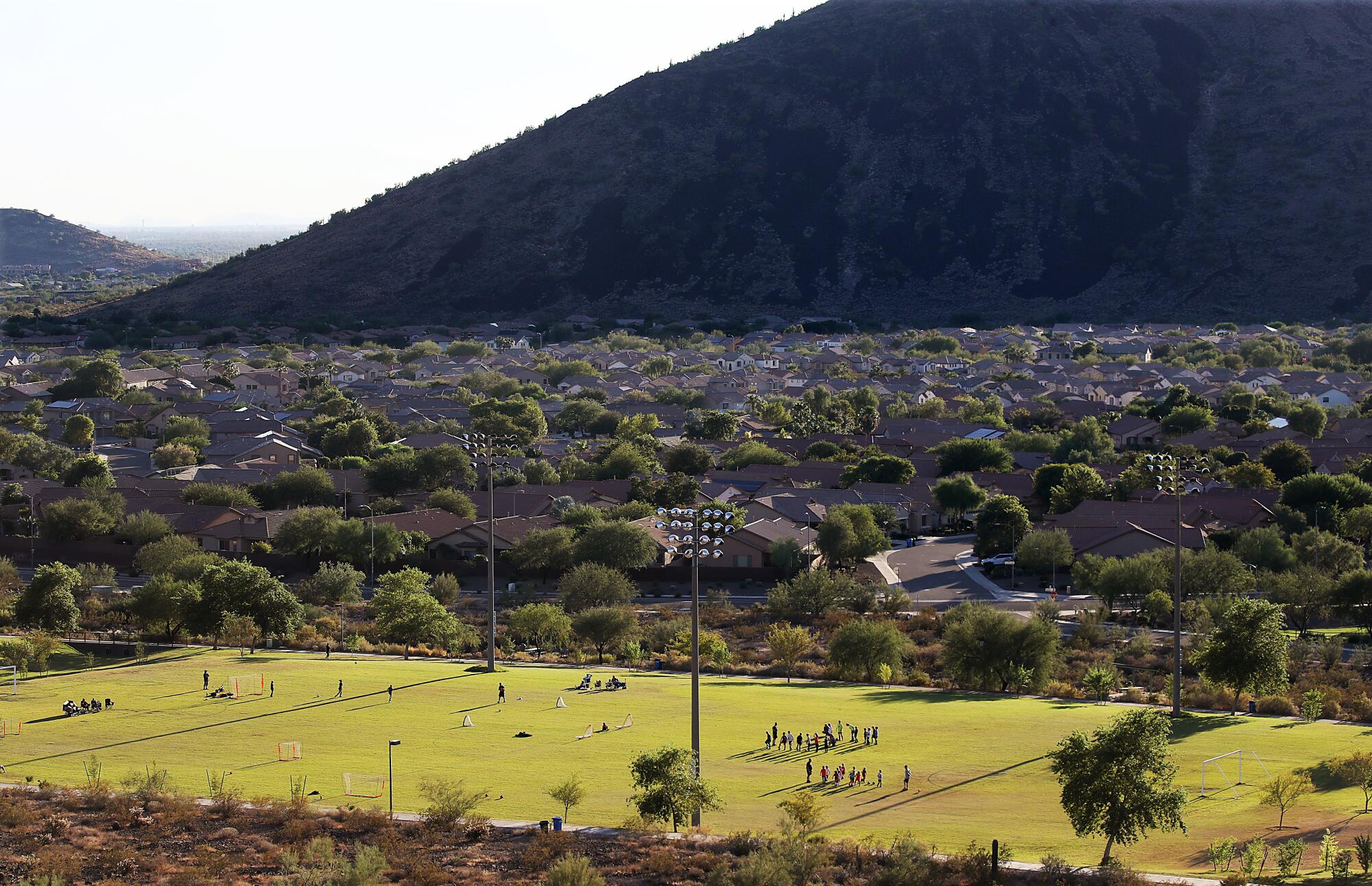
Meanwhile, groundwater remains unregulated in most rural areas of Arizona, and large farming operations have been pumping heavily, drawing down water levels and leaving homeowners with dry wells. Around Kingman in western Arizona, where large new plantings of pistachio orchards have raised concerns among local officials, the state’s water regulators have announced that they will limit the amount of land that may be irrigated in the Hualapai Valley.
Buckeye has a substantial amount of groundwater locally and plans to seek additional water that could be brought in from other areas, said Terry Lowe, the city’s director of water resources.
“It’s a hot market, the Phoenix metro area in general, and we’ve got to be able to have that water to meet that demand,” Lowe said. “And so we’re looking at working with others outside to find sources.”
For the planned 37,000-acre community Teravalis, the developers have two existing water approvals, called certificates of assured water supply, to build about 7,000 homes, and plan to seek additional approvals to build more. The developers plan to pump groundwater from the aquifer beneath the property, which lies in the Hassayampa River watershed.
“It’s one of the most plentiful aquifer basins in the state of Arizona. So we feel pretty good about that,” said Heath Melton, regional president for the Howard Hughes Corp. “We feel like we’re in a really good place.”
Melton said the community will conserve water by having low-water-use plants and fixtures, and will use recycled wastewater for outdoor irrigation and to recharge the aquifer.
Developers are also supporting the state government’s efforts to secure additional water from new sources.
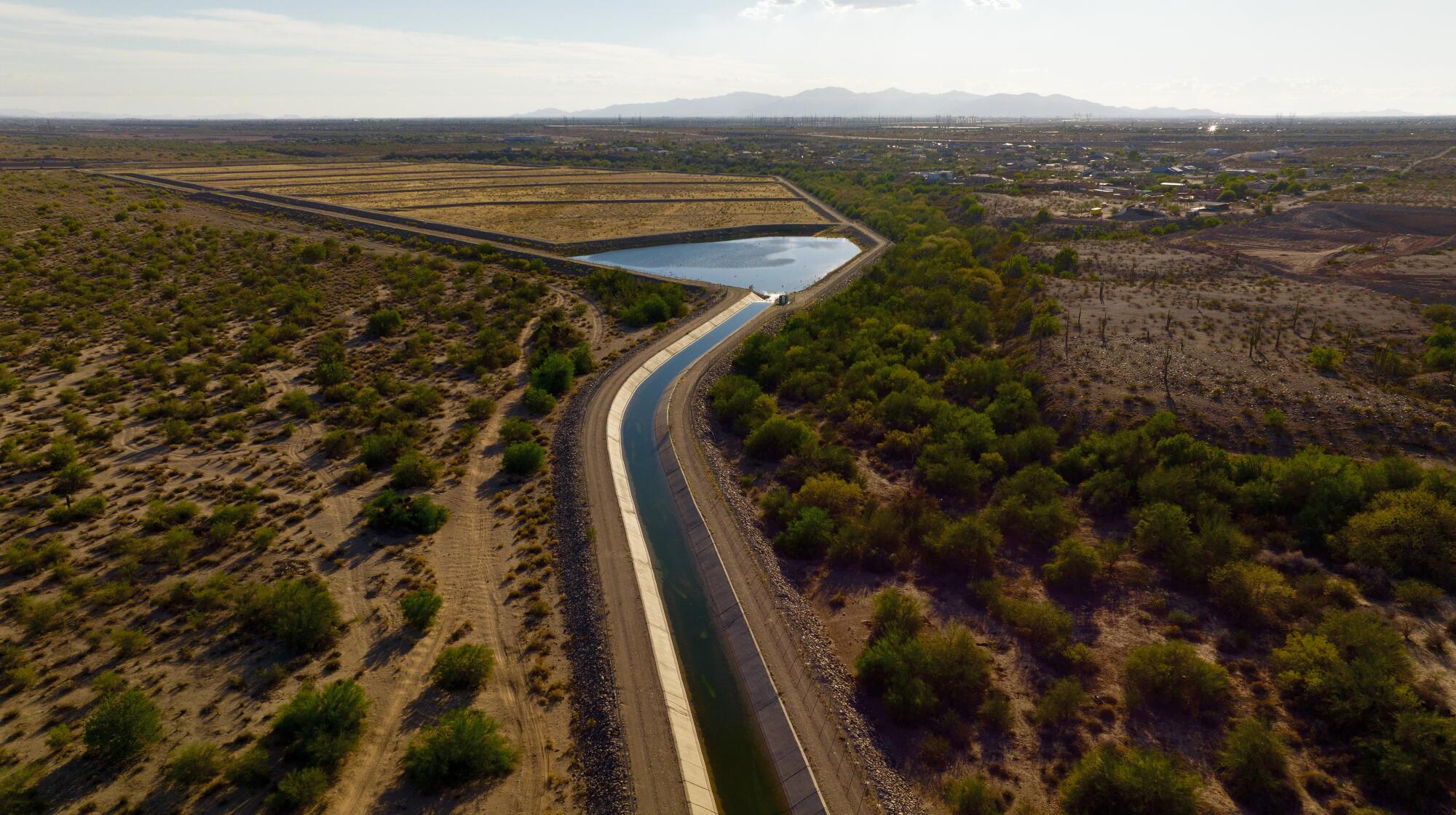
Legislation signed by Gov. Doug Ducey established a Water Infrastructure Finance Authority that will have about $1.4 billion for conservation projects and to secure additional supplies, including possibly bringing in water from outside the state. Arizona officials have been looking into a possible deal with Mexico to desalinate seawater at the Sea of Cortez and exchange that water for some of Mexico’s Colorado River water.
In the Hassayampa watershed in Buckeye, state water regulators have been working on an updated analysis of the groundwater basin. In letters to some other developers in the area, they have warned that although their report is not yet complete, they have “information indicating that the proposed subdivision’s estimated groundwater demand for 100 years is likely not met when considered with other existing uses and approved demands in the area.”
The Arizona Department of Water Resources similarly announced in 2019 that projections showed insufficient groundwater available for all the planned developments in Pinal County, between Phoenix and Tucson.
Years ago, scientists said climate change would bring a Colorado River crisis. Their warnings, which largely went unheeded, are now playing out.
“The amount of groundwater we can allocate for these purposes is finite,” said Tom Buschatzke, the department’s director. He said in the Hassayampa basin, all the proposed developments won’t be able to grow on groundwater alone.
“They’ve got to find a different way to do business than what they’ve historically done,” he said. “They’ve got to find different pathways, more likely more expensive pathways.”
Buschatzke said the area still has options, such as bringing in water from other areas or using recycled water.
Even as the supply of Colorado River water shrinks, some researchers are optimistic about the state’s ability to adapt.
“The whole state is at an inflection point where we have to take some definite actions toward making sure of water supplies to serve the populations that are here now and into the future,” said Sarah Porter, director of ASU’s Kyl Center for Water Policy. “Arizona has a long history of meeting these water challenges, and I think Arizona will do that again.”
Ferris said she feels more pessimistic.
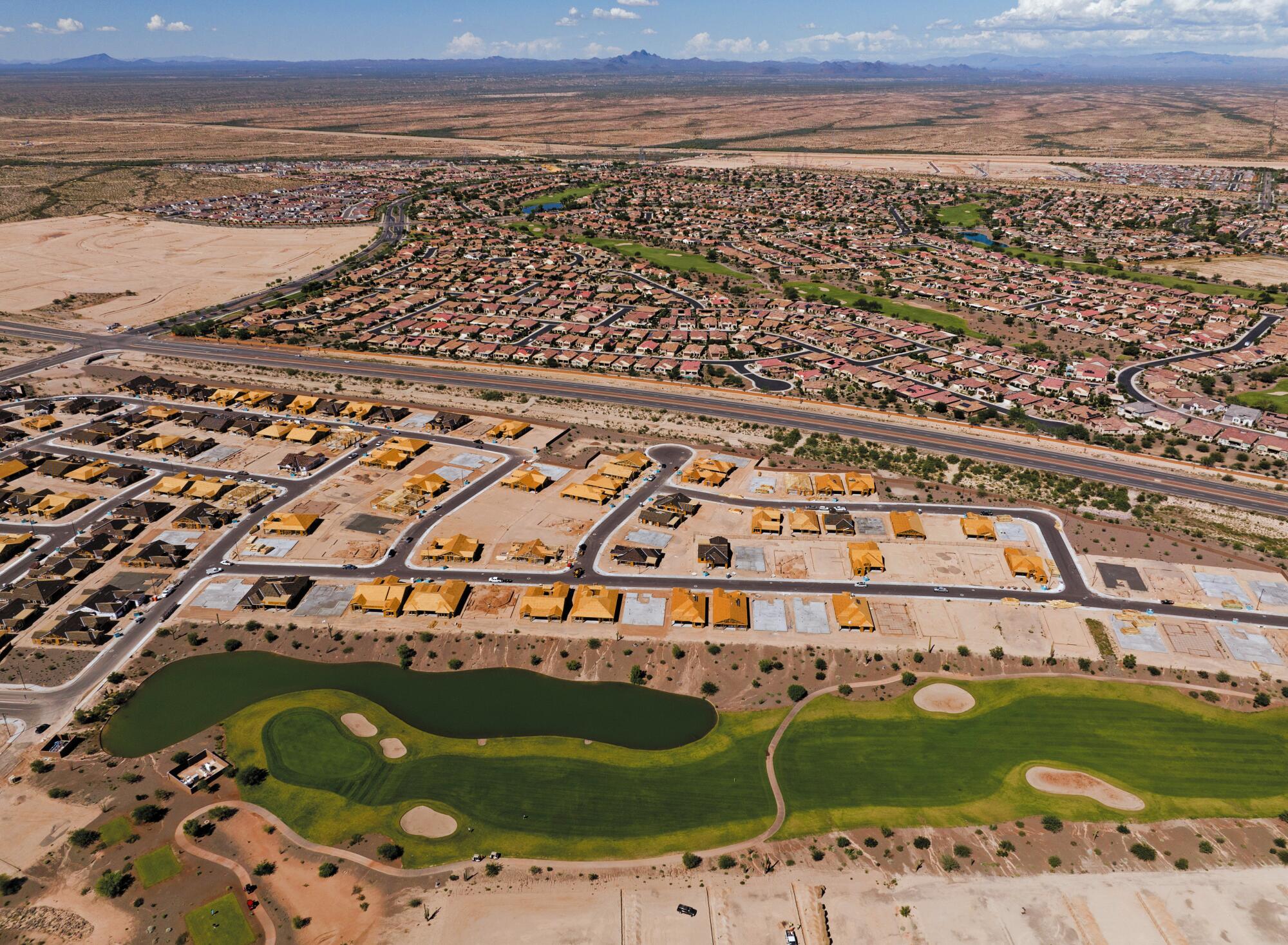
Visiting a new development in Buckeye, Ferris drove past an entrance with flowing fountains. She watched workers building homes beside a golf course with ponds.
Nearby, new homes stood beside the open desert. On empty lots, flattened patches of dirt lay ready for the foundations to be poured.
“We have to stop growing these giant developments on groundwater. It is unsustainable,” Ferris said. “We need to limit the growth.”
